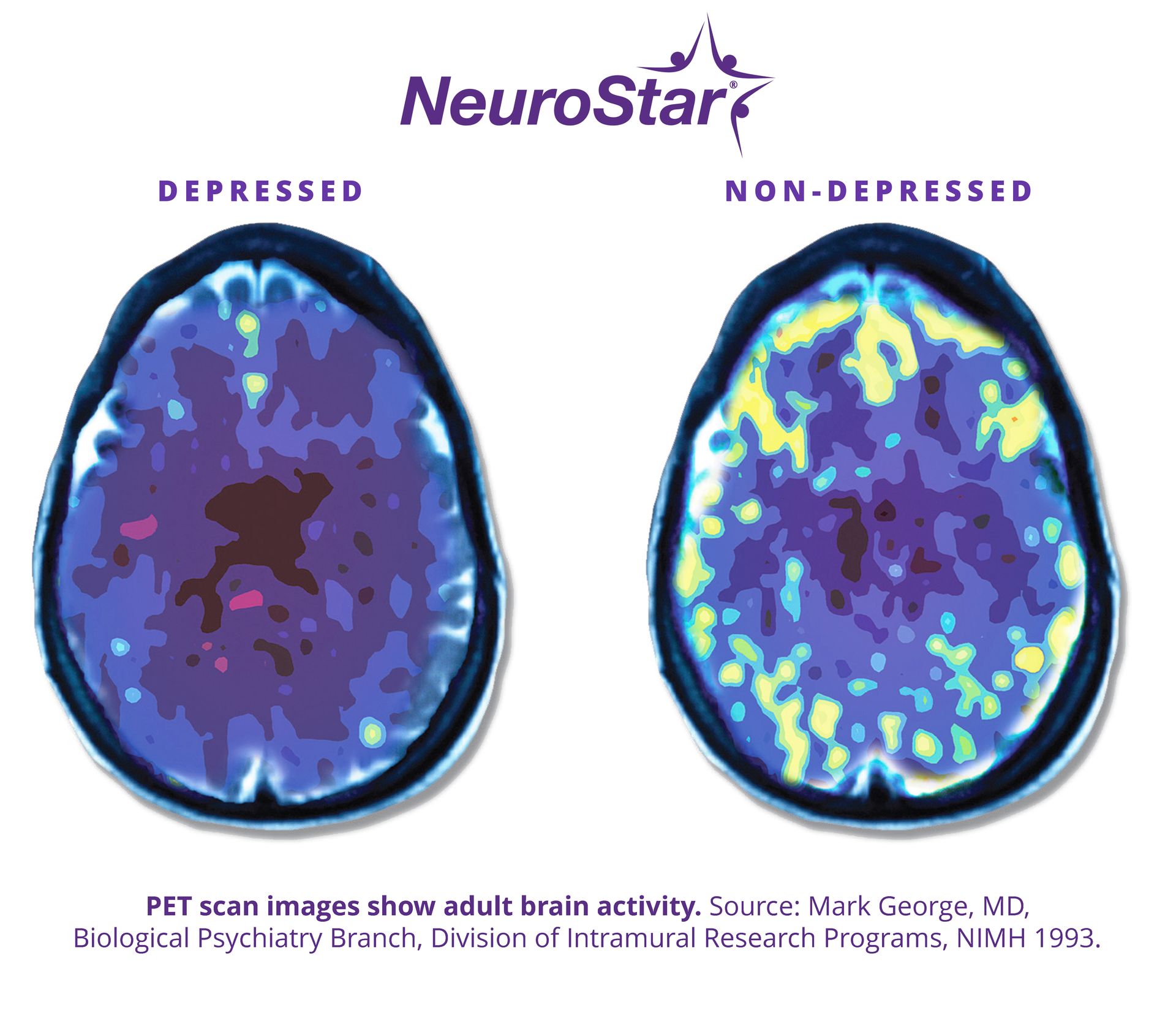NeuroStar® TMS Therapy
FDA-cleared, non-medication depression treatment
Existing Patients For Providers →
(855) 940-4867

Written By: Sean Blackburn
Greenbrook Alumnus
I am someone who knows the weight of depression and anxiety all too well. I know what it’s like to feel trapped in bed for days, sometimes weeks at a time. I’ve been in that place where every attempt to pull myself up only seemed to drag me deeper into the cold darkness.
For years, I struggled silently like many others who face depression or anxiety, feeling like there was no way out. I eventually found a path forward—something that changed everything for me: NeuroStar® TMS (Transcranial Magnetic Stimulation) therapy at Greenbrook Mental Wellness Centers. Over several weeks, this treatment helped me find the life I so desperately wanted but couldn’t quite grasp.
I first noticed a difference between myself and my peers at a young age. This led to confusion and frustration within myself as I learned to find coping mechanisms for the depression that was creeping into my life day by day.
Those years were hard —really hard. I was sensitive and deeply affected by rejection and criticism. If I didn’t already feel out of place enough, bullying started around that time too, mostly regarding my weight. Each word chipped away at me, adding another layer to the shame and sadness that was already building inside me.
By the time I was 15, my parents saw how much I was struggling. That’s when I began the rollercoaster of trying different antidepressant medications and trying different therapists. The trial-and-error process with medication was grueling. Waiting 4-6 weeks for a new medication to maybe work felt unbearable when I was already feeling miserable. I worried what people would think if they found out I needed medication to regulate the chemicals in my brain or that I would be seen as “weak” for needing help.
Of course, there are always those who don’t understand —people who think depression is a mindset or a problem that is a way to get attention from others. “Why don’t you just be happy instead of sad?” they say. “Exercise! Eat right! You have nothing to be sad about!” or one of my favorites which is “It’s all in your head.” Every time I heard something like that, it stung. It made me feel weak like my struggles were just laziness or a character flaw that could be fixed if I just tried harder.
I first heard about TMS therapy a few years ago through magazine articles and social media ads. Every now and then, I’d come across something mentioning it as a non-invasive treatment for depression, but at the time, I didn’t think much of it. I filed it away as something interesting but distant —one of those things that might help other people but probably wouldn’t do much for me.
As time when on, my depression became hard to manage. The medications weren’t giving me the relief I needed, and I found myself becoming more desperate to try anything that could help me live the life I always dreamed of —a life where I was happy, confident, and capable. I wanted to advance in my career, take care of my family financially, and be the kind of strong leader my kids could count on. Every time I would try to grasp it though; it would slip through my fingers.
What really drew me to TMS therapy was the fact that it wasn’t medication-based. That appealed to me right away because, after years of adjusting doses and trying new prescriptions, I was ready for a different approach. Then, I saw pictures that visually show the difference in brain activity between a depressed brain and a normal, healthy brain (Fig. 1-1).

In those scans, you can see how much of the brain is dormant when someone has depression. The areas that are supposed to light up with activity are just... dark. When I looked at that depressed brain, I thought, that’s exactly what my brain feels like. Tired. Unmotivated. Negative. Unable to handle all the responsibilities and pressures that life throws at you. It felt like I was looking at the physical representation of everything I’d been experiencing for years. That image stuck with me. The more I learned about NeuroStar® TMS therapy, the more it made sense —stimulating parts of the brain that had essentially gone offline to restore function and lift depression. I also found out that my insurance would cover most of the cost, and since I’d already met my deductible that year, it was a no-brainer —no pun intended.
At first, I wasn’t sure how I’d feel about going into the center five days a week, but it turned out to be something I genuinely looked forward to. Getting NeuroStar® TMS therapy at Greenbrook quickly became a comforting routine for me. Every day felt like another step toward healing, and I was always met by people who truly cared about my well-being. It didn’t feel clinical or rushed — there was a deep sense of compassion.
During the sessions, I felt comfortable, relaxed and cared for. One of my favorite ways to pass the time was talking to my technician about movies. We had a lot of fun swapping show recommendations, and sometimes I’d even pull up relaxing videos on YouTube to watch during the session. It gave me something to look forward to —not just the treatment itself but the simple joy of being able to connect with someone who made the experience enjoyable.
Getting out of the house every day to go to Greenbrook became a bright spot in my routine. It wasn’t about the treatment; it was also about spending time with people who made me feel seen and understood. For someone who’s been through a lot, that kind of connection is something you don’t take for granted. I was even able to bring my 16-month-old daughter with me to most of the appointments, and she would happily watch me and the Greenbrook staff with curiosity as we did the treatments.
Around the third or fourth week of treatment, I experienced what I can only describe as an awakening. It felt like I was coming back to life after a long, dark sleep —like the sun was starting to shine through the crack in the curtains. My mood began to improve, and I felt like a heavy burden I had been carrying for decades was finally lifting.
TMS gave me a metaphorical flashlight, illuminating parts of my mind that had been shrouded in darkness for years. It helped me face those thoughts and emotions head-on with confidence and a perspective that continues to evolve and grow every day.
My life is completely different from the day I first walked through Greenbrook’s doors —different in the best ways imaginable. My entire mindset has shifted into a higher gear, one I never thought possible for me. Now, instead of avoiding problems, I confront them head-on. I have an awareness of my thoughts and emotions that I didn’t have before, and this awareness allows me to challenge and defuse negative patterns before they take hold.
Since completing treatment, I got my dream job. I started school to advance my career in IT. Most importantly, I’m able to be the best father to my three amazing children and the kind of husband my wife truly deserves. I’ve become the man I always wanted to be —the kind of man who leads his family with love, strength, and resilience. TMS gave me the tools to unlock that potential within me.
If you’re on the fence about trying TMS, let me tell you this: I was there too. I was skeptical. I didn’t know if it would actually work or if it would be just another trend in mental health treatment. But what I found at Greenbrook wasn’t a fad —it was life-changing.
TMS helped me break free from the chains of depression that held me down for far too long. It gave me a second chance at life. If you’re struggling, you owe it to yourself to explore every option available. TMS might just be the key to the life you’ve been searching for.
I can’t recommend Greenbrook highly enough. The staff there genuinely cares about your healing and success. It’s not just a job to them —they’re invested in your journey. They create an environment that feels safe, supportive, and warm. You’ll be treated with compassion and respect every step of the way. If you’re ready to change your life, Greenbrook Mental Wellness Centers is the place to start.
Adult Indications for Use
The NeuroStar Advanced Therapy System is indicated for the treatment of depressive episodes and for decreasing anxiety symptoms for those who may exhibit comorbid anxiety symptoms in adult patients suffering from Major Depressive Disorder (MDD) and who failed to achieve satisfactory improvement from previous antidepressant medication treatment in the current episode.
The NeuroStar Advanced Therapy system is intended to be used as an adjunct for the treatment of adult patients suffering from Obsessive-Compulsive Disorder (OCD).
Adolescent Indications for Use
NeuroStar Advanced Therapy is indicated as an adjunct for the treatment of Major Depressive Disorder (MDD) in adolescent patients (15-21).
Important Safety Information
NeuroStar Advanced Therapy is only available by prescription. A doctor can help decide if NeuroStar Advanced Therapy is right for you. Patients’ results may vary.
The most common side effect is pain or discomfort at or near the treatment site. These events are transient; they occur during the TMS treatment course and do not occur for most patients after the first week of treatment. There is a rare risk of seizure associated with the use of TMS therapy (<0.1% per patient).
Visit neurostar.com for full safety and prescribing information.
Take our short quiz to see if TMS therapy or nasal esketamine could be right for you
Subscribe for mental health, self-care, and TMS therapy and nasal esketamine updates for those affected by treatment-resistant depression or OCD.
Thank you for subscribing to our email list!
Oops, there was an error adding your subscription.
Please try again later.
By providing your email address, you are consenting to receive blog updates from Greenbrook TMS Inc. You may unsubscribe from these alerts at any time by following the “unsubscribe” link at the bottom of email alerts. At Greenbrook TMS Inc. we take the privacy and security of your personal information seriously. To learn more about how we protect your personal information, please refer to our Privacy Policy.
Greenbrook supports an accessible internet. If you have any questions about our accessibility features, please contact us at
(855) 940-4867 or info@greenbrooktms.com.
All Rights Reserved | Greenbrook TMS NeuroHealth Centers.